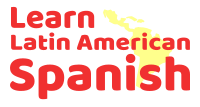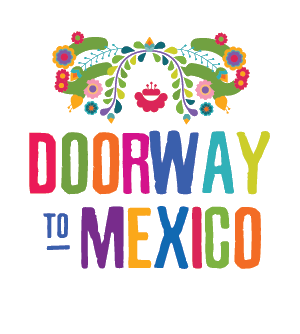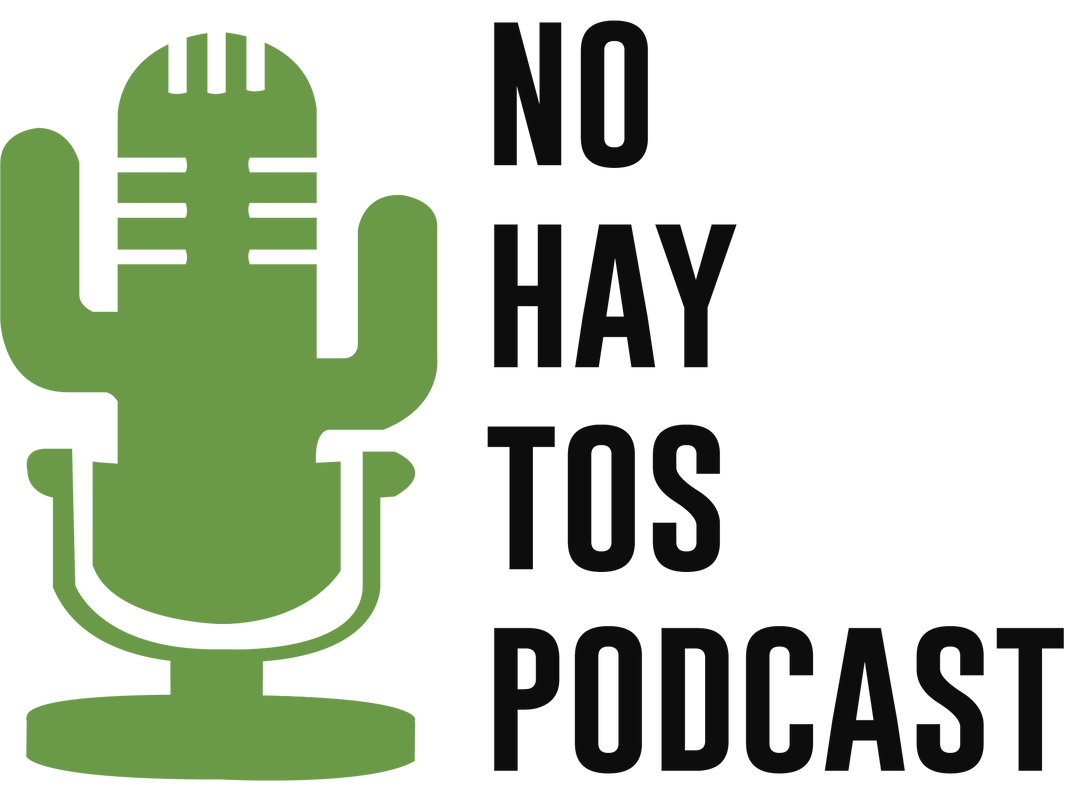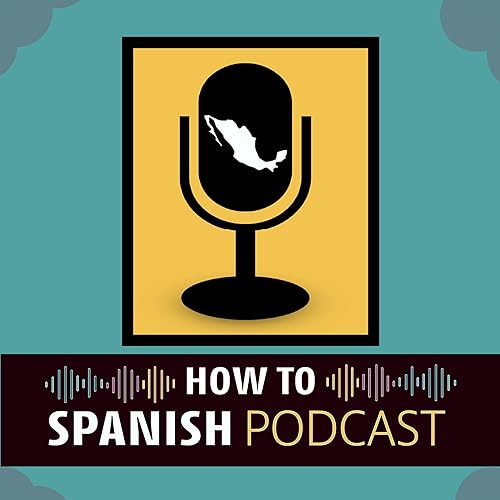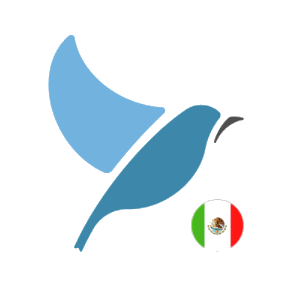|
Learn Mexican Spanish: A Spanish Course for Mexico (Audiobook)
A course in Mexican Spanish, combining detail on Spanish with the nuances of Mexican usage. The course contains 10 sessions spanning multiple vocabulary areas, starting with new material and then reviewing the material using the technique of spaced repetition, grammar tips, and music are included to help improve your pronunciation along with games to help recall. Topics covered included numbers, greetings, foods, vehicles, places, simple verb usage, parts of the body, positions, colors, weather, time, and many other topics. This course will make you proficient in Mexican Spanish in just a few hours, and then provide a library of material for you to deepen your vocabulary and improve your understanding and pronunciation. |
An Overview of Mexican Spanish
Native speakers: 130 million.
Mexican Spanish is a set of varieties of the Spanish language as spoken in Mexico and in some parts of the United States and Canada.
Spanish was brought to Mexico in the 16th century by Spanish Conquistadors. As in all other Spanish-speaking countries, different accents and varieties of the language exist in different parts of the country for both historical and sociological reasons. Among these, the varieties that are best known outside of the country are those of central Mexico mainly because the capital, Mexico City, hosts most of the mass communication media with international projection. For this reason, most of the film dubbing identified abroad with the label "Mexican Spanish" or "Latin American Spanish" actually corresponds to the central Mexican variety.
Mexico City was built on the site of Tenochtitlan, the capital of the Aztec Empire. Besides the Aztecs or Mexica, the region was home to many other Nahuatl-speaking cultures as well; consequently many speakers of Nahuatl continued to live there and in the surrounding region, outnumbering the Spanish-speakers, and the Spanish of central Mexico incorporated a significant number of Hispanicized Nahuatl words and cultural markers. At the same time, as a result of Mexico City's central role in the colonial administration of New Spain, the population of the city included a relatively large number of speakers from Spain, and the city and the neighboring State of Mexico tended historically to exercise a standardizing effect over the language of the entire central region of the country.
The territory of contemporary Mexico is not coextensive with what might be termed Mexican Spanish. The Spanish spoken in the southernmost state of Chiapas, bordering Guatemala, resembles the variety of Central American Spanish spoken in that country, where voseo is used. Meanwhile, to the north, many Mexicans stayed in Texas after its independence from Mexico, and their descendants continue to speak a variety of Spanish known as "Tex-Mex." And after the Treaty of Guadalupe Hidalgo many Mexicans remained in the territory ceded to the U.S., and their descendants have continued to speak Spanish within their communities in Arizona, California, Colorado, New Mexico, Nevada, Utah, and Wyoming. In addition, the waves of 19th- and 20th-century migration from Mexico to the United States (mostly to the formerly Mexican area of the Southwest) have contributed greatly to making Mexican Spanish the most widely spoken variety of Spanish in the United States. The Spanish spoken in the Gulf coastal areas of Veracruz and Tabasco and in the states of Yucatan and Quintana Roo exhibits more Caribbean phonetic traits than that spoken in the rest of Mexico. And the Spanish of the Yucatán Peninsula is distinct from all other forms in its intonation and in the incorporation of Mayan words.
The First Mexican Empire comprised what is present-day El Salvador, Nicaragua, Guatemala, Belize, and Honduras, aside from the mentioned present states of United States; thus dialects of Costa Rican, Guatemalan, Honduran, New Mexican, Nicaraguan, and Salvadoran Spanish were originally included in the dialects of Mexican Spanish.
Regarding the evolution of the Spanish spoken in Mexico, the Swedish linguist Bertil Malmberg points out that in Central Mexican Spanish—unlike most varieties in the other Spanish-speaking countries—the vowels lose strength, while consonants are fully pronounced. Malmberg attributes this to a Nahuatl substratum, as part of a broader cultural phenomenon that preserves aspects of indigenous culture through place names of Nahuatl origin, statues that commemorate Aztec rulers, etc. The Mexican linguist Juan M. Lope Blanch, however, finds similar weakening of vowels in regions of several other Spanish-speaking countries; he also finds no similarity between the vowel behavior of Nahuatl and that of Central Mexican Spanish; and thirdly, he finds Nahuatl syllable structure no more complex than that of Spanish. Furthermore, Nahuatl is not alone as a possible influence, as there are currently more than 90 native languages spoken in Mexico, and they all contribute to the diversity of accents found throughout the country. For example, the intonation of some varieties of Mexican Spanish is said to be influenced by that of indigenous languages, including some which are tone languages (e.g. Zapotec). The tonal patterns and overlengthening of the vowels in some forms of Mexican Spanish were particularly strong among mestizos who spoke one of the native Mexican languages as their first language and Spanish as a second language, and it continues so today.
Source: Wikipedia
Mexican Spanish is a set of varieties of the Spanish language as spoken in Mexico and in some parts of the United States and Canada.
Spanish was brought to Mexico in the 16th century by Spanish Conquistadors. As in all other Spanish-speaking countries, different accents and varieties of the language exist in different parts of the country for both historical and sociological reasons. Among these, the varieties that are best known outside of the country are those of central Mexico mainly because the capital, Mexico City, hosts most of the mass communication media with international projection. For this reason, most of the film dubbing identified abroad with the label "Mexican Spanish" or "Latin American Spanish" actually corresponds to the central Mexican variety.
Mexico City was built on the site of Tenochtitlan, the capital of the Aztec Empire. Besides the Aztecs or Mexica, the region was home to many other Nahuatl-speaking cultures as well; consequently many speakers of Nahuatl continued to live there and in the surrounding region, outnumbering the Spanish-speakers, and the Spanish of central Mexico incorporated a significant number of Hispanicized Nahuatl words and cultural markers. At the same time, as a result of Mexico City's central role in the colonial administration of New Spain, the population of the city included a relatively large number of speakers from Spain, and the city and the neighboring State of Mexico tended historically to exercise a standardizing effect over the language of the entire central region of the country.
The territory of contemporary Mexico is not coextensive with what might be termed Mexican Spanish. The Spanish spoken in the southernmost state of Chiapas, bordering Guatemala, resembles the variety of Central American Spanish spoken in that country, where voseo is used. Meanwhile, to the north, many Mexicans stayed in Texas after its independence from Mexico, and their descendants continue to speak a variety of Spanish known as "Tex-Mex." And after the Treaty of Guadalupe Hidalgo many Mexicans remained in the territory ceded to the U.S., and their descendants have continued to speak Spanish within their communities in Arizona, California, Colorado, New Mexico, Nevada, Utah, and Wyoming. In addition, the waves of 19th- and 20th-century migration from Mexico to the United States (mostly to the formerly Mexican area of the Southwest) have contributed greatly to making Mexican Spanish the most widely spoken variety of Spanish in the United States. The Spanish spoken in the Gulf coastal areas of Veracruz and Tabasco and in the states of Yucatan and Quintana Roo exhibits more Caribbean phonetic traits than that spoken in the rest of Mexico. And the Spanish of the Yucatán Peninsula is distinct from all other forms in its intonation and in the incorporation of Mayan words.
The First Mexican Empire comprised what is present-day El Salvador, Nicaragua, Guatemala, Belize, and Honduras, aside from the mentioned present states of United States; thus dialects of Costa Rican, Guatemalan, Honduran, New Mexican, Nicaraguan, and Salvadoran Spanish were originally included in the dialects of Mexican Spanish.
Regarding the evolution of the Spanish spoken in Mexico, the Swedish linguist Bertil Malmberg points out that in Central Mexican Spanish—unlike most varieties in the other Spanish-speaking countries—the vowels lose strength, while consonants are fully pronounced. Malmberg attributes this to a Nahuatl substratum, as part of a broader cultural phenomenon that preserves aspects of indigenous culture through place names of Nahuatl origin, statues that commemorate Aztec rulers, etc. The Mexican linguist Juan M. Lope Blanch, however, finds similar weakening of vowels in regions of several other Spanish-speaking countries; he also finds no similarity between the vowel behavior of Nahuatl and that of Central Mexican Spanish; and thirdly, he finds Nahuatl syllable structure no more complex than that of Spanish. Furthermore, Nahuatl is not alone as a possible influence, as there are currently more than 90 native languages spoken in Mexico, and they all contribute to the diversity of accents found throughout the country. For example, the intonation of some varieties of Mexican Spanish is said to be influenced by that of indigenous languages, including some which are tone languages (e.g. Zapotec). The tonal patterns and overlengthening of the vowels in some forms of Mexican Spanish were particularly strong among mestizos who spoke one of the native Mexican languages as their first language and Spanish as a second language, and it continues so today.
Source: Wikipedia
Mexican Spanish Learning Books
|
Mexican Spanish for Beginners: Your Guide to Speaking and Understanding the Language and Culture of Mexico with Confidence - From Beginner to Advanced (Audiobook)
Embark on a Linguistic Adventure: Master Mexican Spanish with Ease. Discover the Magic of Mexico Through Its Language. Are you ready to transform your understanding of Spanish and immerse yourself in Mexico's rich culture? "Mexican Spanish for Beginners" is more than just a language course; it's your personal guide to a vibrant linguistic journey. Dive into a cultural annex at the end of every chapter, filled with specific slang, idioms, and fun facts about Mexican Spanish. Learn the differences between Mexican Spanish and Castilian Spanish, helping you become a local in no time! |
|
Learn Mexican Spanish for Adult Beginners: 3 Books in 1: Speak Mexican Spanish in 30 Days! (Learn Spanish for Adults)
Learn Mexican Spanish for Adult Beginnersincludes 3 books in 1. Inside, you’ll find:
|
|
Daily Life Mexican Spanish: For Beginners
This is not just any language learning book, it’s your passport to navigate the linguistic landscape of Mexico, designed specifically for beginners. Master the basics of formal Spanish and get a taste of local flavor with authentic Mexican slang. We've married traditional language instruction with the unique charm of Mexican idioms, offering an unmatched language learning experience. Go beyond the formal 'usted' and 'hola', to confidently use colloquial phrases like 'qué onda' and 'chido'. You'll also learn commonly used family nicknames, making your Spanish sound more natural and friendly. |
|
My Burning Tongue: Mexican Spanish
There are more than 167 million native speakers of Mexican Spanish, with nearly 40 million in the United States alone. Explore the idiosyncrasies of this colorful language spoken throughout the region. If a Mexican asks you for a popote, should you be worried? If he shouts ¡Aguas!, will you get wet? If another asks ¿Cómo ves?, is he concerned about your visual acuity? Find out what Mexicans are really saying as you uncover the hidden meaning behind local words, idioms, and sayings. This book doesn't teach you Spanish; it teaches you how to make your Spanish more Mexican. |
|
Mexislang: The key to understanding what the hell your Mexican friends are saying
This book is essential if you are learning Spanish and planning to spend time in Mexico, or even if you just like to watch Netflix shows from Mexico. Mexican daily conversations are filled with slang and even if you have learned a lot of Spanish you may find the conversation incomprehensible without learning what people in Mexico REALLY say when they talk to each other. This outstanding book with plenty of real life examples is written by a native Mexican. These examples are important because slang terms are often used in many different ways and with different meanings even for the same words or phrases. |
|
Mouthing Off in Mexico: Essential Cursing in Everyday Conversations
This book will help you gain invaluable insights into the world of profanity in Mexican Spanish — a topic that may otherwise take you many painstaking years to grasp. Mouthing Off in Mexico does not consist of just lewd and offensive dialogue, not at all. Cursing in any language is also an important part of the culture. You may not curse out loud in your native tongue, but you probably know what all those swear words mean, right? Imagine how different your thoughts and conversations would be if you didn’t. Like it or not, cursing exists and it is a language in and of itself. The book simply brings it out of the darkness and into the light in a fun and revealing way. |
|
Quick Guide to Mexican Spanish
This dictionary-style book of words and phrases helps you better understand Mexican Spanish and slang. The collection of more than 450 terms and sayings will help you become familiar with the richness of the country’s Spanish. It includes slang and vulgar words that you will likely run across in everyday conversations. There are also more than 400 example sentences demonstrating how to use the words. This book contains words that are not appropriate for kids. If you are just starting to learn Spanish, this book is best used as a complementary reference source to any program or class designed to teach you Spanish. This book and the other books of the Speaking Latino series are not designed as stand-alone learning aids, to teach you Spanish. Instead, they expand your country-specific Spanish vocabulary. If you already speak Spanish, this book help you understand local Spanish from Mexico. |
|
Quick Guide to More Mexican Spanish
This book is the second volume about Mexican Spanish and vocabulary following the first book, Quick Guide to Mexican Spanish. More than 450 new vocabulary words and phrases are added to this second Mexican Spanish slang phrasebook. Each term has been defined in English and synonyms are included when available. In addition, there are also more than 400 example sentences demonstrating how to use the words. It includes 46 black and white illustrations. With this book, words like charro, guajolote, petaca, apá and caguama will no longer be a mystery. As with the first volume, this volume also contains words that are not appropriate for kids. If you are just starting to learn Spanish, this book is best used as a complementary reference source to any program or class designed to teach you Spanish. |
|
101 Conversations in Mexican Spanish: Short Natural Dialogues to Learn the Slang, Soul, & Style of Real Mexican Spanish (Audiobook)
Struggle no more with the slang and expressions of spoken Mexican Spanish! This book fixes that. For the first time, you’ll learn to move beyond beginner level, and speak Spanish in the real world! With 101 authentic conversations in intermediate Mexican Spanish, and a brand-new story in this edition, you’ll become confident in the words, phrases and expressions you need to communicate like a local. 101 Conversations in Mexican Spanish transports you into a real-world, brand-new story that unfolds between eight Mexican characters, told by the people themselves. Over 15,000 words of real Mexican Spanish, you’ll immerse yourself in a gripping Mexican drama and get an education in natural Spanish in the process. |
|
Lonely Planet Mexican Spanish Phrasebook & Dictionary 6
This is your passport to the most relevant Mexican Spanish phrases and vocabulary for all your travel needs. Order Mexican delicacies at restaurants, bargain for the best price at markets, and discuss Mayan history with the locals - all with your trusted travel companion. The book is crammed with essential tips on culture, manners, idioms and multiple meanings. With language tools in your back pocket, you can truly get to the heart of wherever you go in Mexico, so begin your journey now! |
|
Short Stories in Mexican Spanish
Embark on a Language Journey with 20 Entertaining Short Stories and Essential Mexican Vocabulary This book invites you to enjoy a captivating linguistic journey while deepening your understanding of Mexican culture. Immerse yourself in the everyday lives of diverse individuals in Mexico, gaining insights into their experiences and cultural richness. Enjoy 20 short stories presented in a dialogue format, offering a wide range of vocabulary and scenarios that reflect the authentic Mexican way of life. Elevate your conversational Spanish skills by delving into topics related to people's experiences in Mexico, making it a valuable resource for everyday language use. Start your adventure now! |
|
Stories from Mexico / Historias de México, Premium 3rd Edition
This book features Spanish and English stories side by side to help you practice and improve your reading skills in your new language while enjoying the support of your native tongue. The practical format spares you the inconvenience of constantly having to look up unfamiliar words and expressions in a dictionary. Simply read as much as you can understand in your new language and refer to the facing page for help, if needed. The book includes 16-well known stories chronicling Mexican history and mythology. You’ll gain valuable insights into Mexican culture as you sharpen your language skills. This updated third edition has been enhanced with 60-minutes of additional audio. Voiced by native Spanish speakers, the recordings cover most of the readings from the book and are accessible online and via app. |
|
Mexican Short Stories / Cuentos Mexicanos: A Dual-Language Book
Greatly influenced by Europe's nineteenth-century literary trends, Mexico's writers crafted some of the most phenomenal prose fiction in Spanish America. Nine different tales range from the realism of López Portillo's “Reloj sin dueño” and the modernismo saturating Gutiérrez Nájera's "La mañana de San Juan" to the historical accuracy of Riva Palacio's "Las mulas de Su Excelencia" and the vivid romanticism of "Amor secreto" by Manuel Payno, named the "father of Mexican short stories." Each story appears in its original Spanish text with expert English translations on each facing page. This dual-language edition features a fascinating new introduction and ample footnotes. An easy-reading pleasure for lovers of fine Spanish-language literature, it is also a valuable educational aid for students and teachers. |
|
3,000 Spanish Words and Phrases They Won't Teach You in School
No matter how much Spanish you study, it’s nearly impossible to fully convince the native-speakers that you’ve got it. Even those estudiantes perfectos who have seemingly mastered speaking a foreign language in a classroom run into problems in real-life situations. 3,000 Spanish Words and Phrases They Won’t Teach You in School goes beyond classroom Spanish by thoroughly explaining expressions, idioms, and quirks used daily by native speakers in Mexico. This must-have manual also includes information on pronunciation, manners, abbreviations, and culture, making it much more than a phrase book. Learn within these pages everything you need to know to speak Mexican Spanish. |
|
Mexican Proverbs / Proverbios Mexicanos
Written in Spanish and English, this book presents hundreds of wise old sayings relative to faith and religion, animals, relationships and family, adversity, and other topics. Author Arturo Medina, born and raised in Mexico City, provides both English and Spanish translations of the proverbs with brief explanations. The proverbs are accompanied by photographs of Mexican crafts, folk art, and architecture, chosen to show the visual traditions that parallel the rich oral traditions represented in this book. Some examples: Los Dichos de los viejitos son Evangelios chiquitos. Old people’s sayings are tiny fragments of the gospel. Dios aprieta pero no ahorca. God may squeeze you tightly, but he does not strangle you. Hazte miel, y te comerán las moscas. Turn yourself into honey, and you will be eaten by flies. No hay quince años feos ni viuda rica despreciable. There is no ugly debutante nor despicable rich widow. |
|
Dictionary of Mexicanismos: Slang, Colloquialisms and Expressions Used in Mexico
This dictionary contains all the real Spanish slang and idioms that are not found in regular dictionaries. These are the terms and expressions that your will hear in business, on the street and in film, music, and in social settings. The English word finder index makes it easy to search for terms about sex, drugs and crime - and much, much more. |
|
Diccionario de Mexicanismos (Spanish Edition)
This Dictionary of Mexicanisms shows the linguistic routines and habits that give identity to Mexicans and in it are reflected the great cultural axes around which the lexicon of Mexican Spanish is concentrated. This dictionary highlights the relationship between language and culture, since it makes clear that what is culturally and cognitively important for Mexicans has more lexicon or more constructions to be expressed. This dictionary captures the linguistic identity and personality of the Mexican people. |
Mexican Spanish Language Courses
|
1-on-1 Spanish tutoring at italki
One-on-one language tutoring at italki is hands down the most efficient way to reach language fluency. That's why it is the most popular platform today for learning a language online. You can practice conversational skills under different real-world scenarios with a native speaker tutor of your choice who provides you with undivided attention and customized lessons that cater to your learning needs and interests. Whether you’re at home, at the airport, or at your local park, you have complete access to learning Mexican Spanish or any other language you want with a native speaker from any country of your choice. SPECIAL OFFER: Get $10 italki credits by joining via this link. |
|
Glossika Mexican Spanish Course
Glossika boosts your fluency through a highly repetitive ‘listen and repeat’ approach. You learn by listening to real sentences used in daily communication recorded by native speakers and repeating after them. This ensures that your vocabulary, pronunciation, and grammar acquisition is more natural, similar to the way children learn to speak. Glossika trains you to put vocabulary together in full sentences and say them the way native speakers do. This course makes you start speaking Mexican Spanish from day one! |
|
Spanish Uncovered: The World’s First StoryLearning Spanish Home Study Course
This new, science-based language learning method was invented by polyglot language expert Olly Richards, who has authored more than a dozen best-selling language books available in bookstores around the world and on Amazon.com. This was the method he used to learn eight languages, and is the exact same method he has been using to help thousands of students learn Spanish. The course comes in both Castilian and Latin American versions, which means that it works for you whatever variety of Spanish you're learning. Find out more! |
|
Baselang's Real World 1-on-1 Spanish tutoring
This top-rated program offers UNLIMITED 1-on-1 Spanish tutoring where you can take as many online Spanish classes as you want, on a daily basis if you wish, with their professional teachers from all around Latin America for a monthly flat rate. Baselang's classes are specifically tailored to your level, from zero to advanced. Don't miss this amazing opportunity! |
|
Preply
Preply is a global online language learning platform designed to promote faster learning with one-on-one online tutors. It connects language tutors with millions of learners from all over the world. You can choose from thousands of Spanish teachers from any country of your choice available in the platform. Book a lesson with a private Spanish teacher today and start learning. Not entirely happy with your tutor? No worries, Preply offers free tutor replacement till you're 100% satisfied. |
|
Learn Mexican Spanish with SpanishPod101.com
SpanishPod101 has loads of high-quality audio and video lessons that cater to students from absolute beginner level to upper-intermediate level. Covering a wide range of subjects, the lessons explore anything from Hispanic culture and particular grammar points to specific scenarios and essential vocabulary. Signing up with SpanishPod101 gives learners access not only to its Mexican Spanish modules but also its Peruvian Spanish, Costa Rican Spanish, and even European Spanish modules. |
|
Mexican Fluency
Mexican Fluency proudly presents four courses: “Fluency Hour” (levels 1-3) and “Speak Like a Mexican.” Created with the needs of busy adults in consideration, each course lasts one month and is meticulously tailored to enhance your language proficiency. Whether you're a complete novice or positioned toward the intermediate stage, our courses are expertly designed to elevate your language skills. |
|
Doorway To Mexico
Doorway to Mexico is a unique language learning program specifically designed for intermediate and advanced Spanish students. Its goal is to help you communicate confidently in Spanish, whether you're exploring Mexico, Latin America... or your own neighborhood. With its exclusive podcasts, transcripts and bonus learning materials, you'll be better prepared for real-life conversations and situations with native Spanish speakers. |
Mexican Spanish Learning Podcasts
|
No Hay Tos
This engaging podcast's name is Mexican slang for “No hay problema” (There is no problem). The hosts are two young Mexican Spanish teachers, Beto from Xalapa and Héctor from Veracruz. Each 10-to-20-minute episode features a lively discussion by Héctor and Beto about a fun topic related to Mexican slang or culture. This is real Mexican Spanish at normal native speaker speed. A great opportunity to hear how natives speak in casual conversation. |
|
How To Spanish
This excellent weekly podcast is designed to help learners improve their listening skills while listening to interesting, real life topics narrated in Mexican Spanish. It covers Mexican culture and language in a creative and fun way. Episodes run 20-30 minutes. The hosts are language teachers David and Ana, who are originally from Mexico City but now live in the beautiful colonial city of Querétaro. Ana and David speak clearly but at a nice natural pace. |
|
Mexican Spanish Phone Conversations
This site contains hundreds of natural phone conversations on a broad range of topics, recorded by Mexican native speakers at normal conversation speed. Perfect for improving your listening skills. Courtesy of Defense Language Institute Foreign Language Center. |
|
Podcast on Mexico by Lengalia
Listen to native speakers from Mexico telling interesting facts about their country, culture and language in Mexican Spanish accent. |
Mexican Spanish Learning Blogs
|
38 Mexican Slang Words To Make You Sound Like A Local
An excellent blog article on Mexican Spanish slang by Baselang. With Baselang's UNLIMITED online 1-on-1 Spanish tutoring you can take as many online Spanish classes as you want with their professional teachers for a monthly flat rate. Don't miss the opportunity! |
|
25 Mexican Spanish Slang Terms and Expressions to Sound Like a True Mexican
A great blog article on Mexican Spanish slang by FluentU. |
|
A guide to Mexican Spanish
A nice introductory blog article on Mexican Spanish by Lingoda, an online school that specializes in teaching foreign languages. |
Mexican Spanish Learning Apps
|
Learn Mexican Spanish App by Bluebird Languages - On Google Play
Learn to speak and understand Mexican Spanish with interactive video lessons narrated in any of 146 languages. Choose from 2,000 pre-recorded lessons (over 5 years of lessons) or create a truly personalized course that revolves around the things you love. If you’re learning for your job, you can even create a personalized course for any of 60 occupations. Bluebird uses the scientifically proven spaced repetition technique, so you’ll learn quickly and retain what you learn long-term. Just listen and repeat – it’s that easy. |
|
Mexican Spanish Basic Phrases - On Google Play
This app was originally developed as an entry to the 2010 "Apps for the Army" competition, and it is based on the modules publicly available online from the US Defense Language Institute. While this app's subject matter relates mainly to military topics, the app is broadly useful with content relating to a range of topics including Greetings and Introductions, Numbers, Days of the Week/Time, Directions, Locations, Descriptions (Colors, Shapes, Sizes, Tastes, Qualities, Quantities), Emergency Terms, Food and Sanitation, Fuel and Maintenance, Lodging, Medical Terms, Military Ranks, Occupations, Parts of the Body, Relatives and Weather. |
1-on-1 Mexican Spanish Lessons at italki
|
italki is the most flexible and affordable language learning platform that connects students with the most dedicated teachers around the world for 1-on-1 online language tutoring through video chat. At italki, you can choose an experienced Mexican Spanish teacher for your personal tutor based on your goals and interests.
Here is a step-by-step instruction to find a native Mexican Spanish teacher at italki:
Good luck and enjoy your lesson! |
Home | About | Contact Us | Disclosure | Privacy Policy
This page contains affiliate links. For more information, see our disclosure page.
Copyright © 2024 LearnLatinAmericanSpanish.com
This page contains affiliate links. For more information, see our disclosure page.
Copyright © 2024 LearnLatinAmericanSpanish.com
